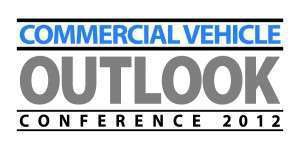Interest in natural gas as a heavy-duty truck fuel remains high, and the fuel’s acceptance will increase as diesel prices rise – in spite of continued infrastructure and acquisition cost issues, panelists at the Commercial Vehicle Outlook Conference in Dallas told attendees Wednesday, Aug. 22.
The panel – moderated by Dr. R. Eugene Goodson, alternative energy expert and former chief executive officer of Oshkosh Truck – consisted of briefings by Dr. Kennon Guiglielmo, president of EControls; Robert Carrick, CNG/LNG sales manager for Freightliner; and Dan England, chairman of C.R. England.
Guiglielmo and Carrick were bullish on the continued growth of natural gas in trucking applications. Guiglielmo, in particular, noted that there already are more than 100,000 heavy-duty vehicles in operation today in Asia that are running with great success. And although natural gas has been a potential energy option for decades, he explained that it was only in 2007 when natural gas production methods became efficient enough to allow the dramatic
“Coal has been the premier power-generation fuel in the United States for decades,” Guiglielmo said. “In fact, more than 50 percent of all the power generated in our country is from coal. But over the past five years, that figure has dropped by 13 percent. And it’s all been replaced by natural gas. That’s equal to putting 600,000 to 700,000 natural gas trucks on the road, and still the price of natural gas has gone down.”
Carrick noted that increasing volumes of scale eventually will bring down acquisition costs and adds that newer engines coming on line – particularly the 12-liter Cummins ISX12G next year, as well as future smaller displacement engines – will give fleets greater options in experimenting with and adopting natural gas.
“Freightliner, Paccar, Volvo and Mack are all offering natural gas trucks today,” Carrick said. “The quality of installation is much better than it’s been in the past, offering Cummins’ dependable spark-ignited technology. We are now at the point where if you, as a fleet, can buy fuel at the right price, we – and our colleagues and competitors – can build a natural gas truck for you.”
Carrick said the biggest remaining hurdle is still the infrastructure issues; fleets worry about being able to find public fueling stations easily. “We hear this called a chicken-and-the-egg scenario,” he said. “Fuel providers claim they can’t build stations until more trucks are on the road. Fleets claim they can’t buy trucks until they have a place to fuel them. But the trucks are out there, and more are coming. The problem is quickly becoming one of ‘We don’t have a place to feed the chickens we’ve already hatched.’ ”
England detailed his company’s initial validation tests running five dual-fuel diesel/LGN trucks on a dedicated route from Los Angeles to Las Vegas, Nev. So far, England said, his results have been mixed. “We’re not real high on what’s happening right now,” he said, noting that maintenance costs have been higher than anticipated – an issue Guiglielmo said could be related to the complex dual-fuel system C.R. England selected for its test runs.
“We feel the real break-even point for a natural gas truck is when diesel fuel is somewhere around $4.80 a gallon,” England said. “We’re obviously not there yet, so we’re not breaking even now. But Paccar is working closely with us on this project, and we’re looking forward to getting the Cummins 12-liter natural gas engine next year, which will be much more suitable for our application. Overall, we’ve learned so far that we really need the acquisition costs to come down for these engines and the break-even point to come down to around $4.10 a gallon for diesel.”
England said his company jumped into natural gas because the fleet wants to be environmentally friendly and encourage energy independence for the United States. “But we want to run profitably as well,” he said. “Customers think a lot of savings from natural gas engines should be passed on to them, and we hope so. We feel the benefits should be passed along to both the customer and ultimately the consumer. But we also feel we should benefit significantly from the savings we hope to accrue from natural gas in the future.”
The Commercial Vehicle Outlook Conference is sponsored by Bridgestone, Castrol Heavy Duty Lubricants, Chevron, Espar Heater Systems, Freightliner, Kenworth, PACCAR Engine, Peterbilt, TRP and Valvoline.








